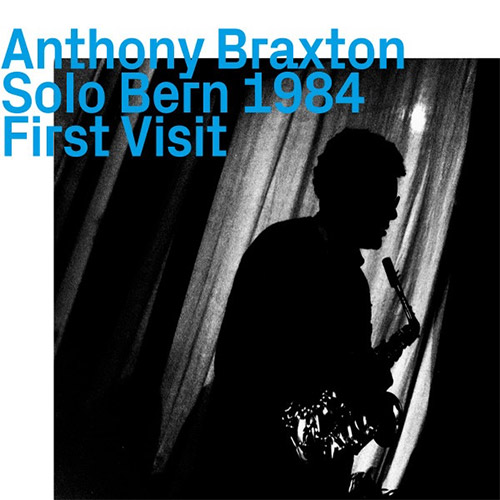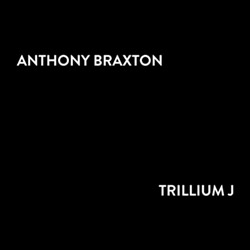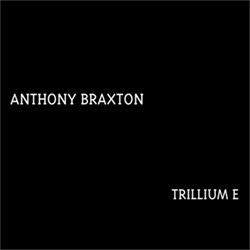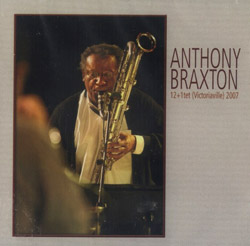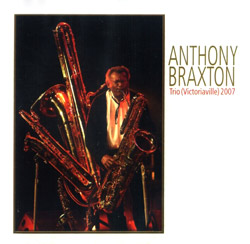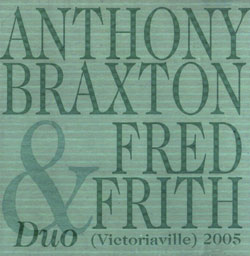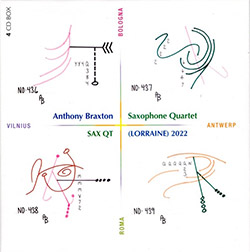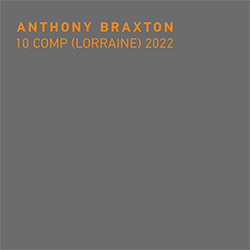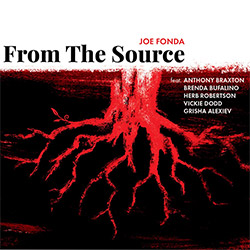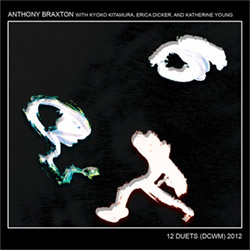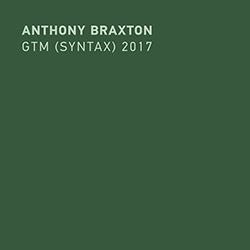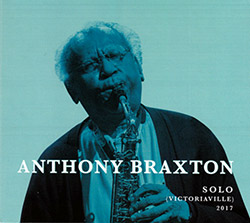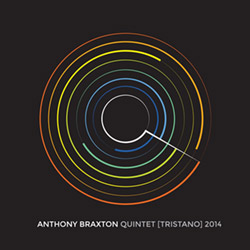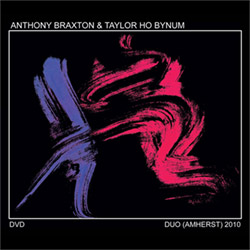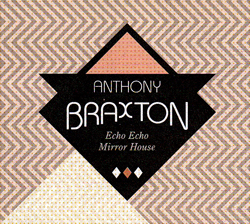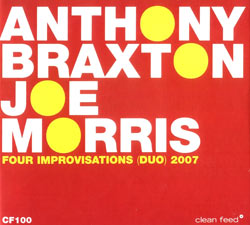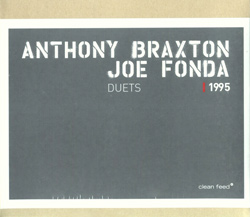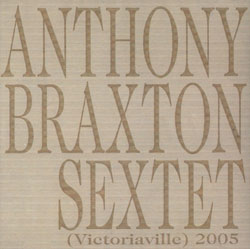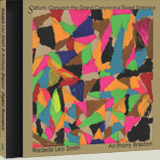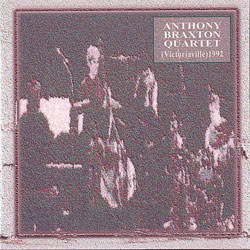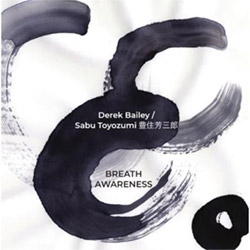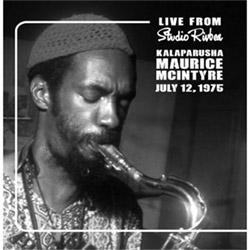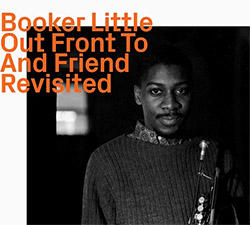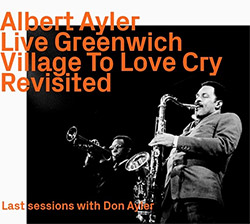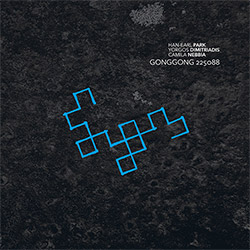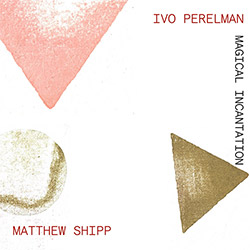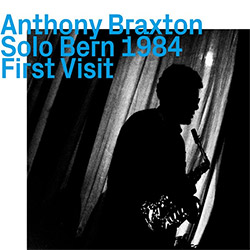
Thirteen years after his breakthrough solo saxophone album For Alto, Anthony Braxton is heard in an inventive solo concert on the same instrument, performing at the Altes Schlachthaus Theatre in Bern, Switzerland for a set of original numbered compositions, the standards "Alone Together" and "I Remember You", and two Coltrane pieces: "Giant Steps" and "Naima".
In Stock
Quantity in Basket: None
Log In to use our Wish List
Shipping Weight: 2.00 units
Sample The Album:
Anthony Braxton-alto saxophone
Click an artist name above to see in-stock items for that artist.
UPC: 752156010326
Label: ezz-thetics by Hat Hut Records Ltd
Catalog ID: ezz-thetics 103
Squidco Product Code: 34839
Format: CD
Condition: New
Released: 2024
Country: Switzerland
Packaging: Cardboard Gatefold
Recorded live at Altes Schlachthaus, in Bern, Switzerland, on July 7th, 1984, by Peter Pfister.
"When Anthony Braxton performed this concert in Bern, Switzerland in July 1984, his musical career, fueled by an ambitious, steadfastly investigative, painstaking and multifaceted creative nature, up to this point had included an AACM apprenticeship; a wide-ranging European sojourn; a roller-coaster ride with the cooperative quartet Circle; the first "classic" Braxton quartet (an extension of Circle where Kenny Wheeler replaced Chick Corea); a sequence of subsequent short-term quartets with changing personnel leading to the formation of his second "classic" quartet (with Marilyn Crispell, Gerry Hemingway, and Mark Dresser); the initiation of his "In the Tradition" explorations; guest appearances and ad hoc collaborations with musicians as diverse as Derek Bailey and Dave Brubeck, Max Roach and Frederic Rzewski; rare but rewarding opportunities to perform his works for string quartet and large ensembles (especially the epic Composition No. 82 for four orchestras); and a sporadic but significant documentation of solo saxophone recitals and studio recordings. His catalogue of compositions had reached No. 118 (with several of these numbers being collections of related works). He was 39 years old.
Despite the exceptional breadth of Braxton's musical perspective, and the sometimes overwhelming specifics of his concepts (think operas, multimedia spectacles, and evolving compositional restructuring), the importance of solo saxophone in Braxton's oeuvre should not be underestimated. This is, in part, because his solo saxophone theories encompass the foundational material - the substructures, essential techniques, and combinatorial premises (they are his "Language Studies," as he has often explained) - of all of his music, but also have much to do with the creative dynamic, the artistic and aesthetic tension, that results from the fluid, mutable, unpredictable relationship between compositional determinism and performance spontaneity (of which improvisation is merely a part).
For the most part, Braxton's compositions for solo saxophone are not formally predetermined or fully notated; they offer the performer various guidelines (melodic contours, rhythmic shapes, sound indications, instrumental techniques, register requirements, and so on) to focus their commitment to the piece at hand. But although these are open-ended instructions which leave specific decisions to the performer, they are not solely improvisational because of the need to establish a compositional identity to the experience. The challenge at the heart of Braxton's solo saxophone music is to discover a way - and a different way each time - for indeterminate qualities and compositional formality to coexist.
With the exception of the atypical studio recording of Composition No. 113 in December 1983 (atypical because it was limited to sopranino saxophone, and in reality was intended as a multimedia presentation with "story instructions," special staging, and photographic backgrounds), this Bern concert is the sole documentation of solo Braxton we have in the two-year period between summer 1983 and summer 1985. In hindsight, the makeup of this program has proven to be an auspicious one, as it contains three pieces - No. 99Q, No. 106R, and No. 118Q - that seem not to have been further documented, and eight that received their first hearings here, including the standards "I Remember You" and "Naima." Others, like No. 77D, No. 77G, No. 77H, and No. 118F, are among those Braxton would return to with some frequency. In its entirety, the concert is lively and penetrating evidence of Braxton's remarkable facility, powers of invention, and commitment to his principles at this point in time, with special emphasis on saxophone techniques energizing variables of tone color, texture, and timbre to affect separate phrases, extended lines, and sectional contrasts.
If there is one piece which most exemplifies these characteristics, it is the oldest and, perhaps, oddest, Composition No. 26B, designed in Paris in the early '70s, first appearing on the 1972 solo recording session issued as Saxophone Improvisations Series F. In his book Composition Notes B (Frog Peak, 1988), Braxton thoroughly describes its multiple components and methodology, and attaches a list of 15 sound resources - beginning as a "staccato line," and eventually featuring "multiphonic sound complexes," "shadow sound lines," "whispered sound statements," and "circular line streams" - to be used to construct the "architectural dynamics" of each performance. The available examples of Braxton's performances do differ greatly - the expanded 16-plus minute version on Series F (which fades out, so there's no indication of how long his initial reading actually was); a seven-minute realization on Alto Saxophone Improvisations 1979, choosing different pitches but with similar ideation, arriving at the key points quicker; a nearly nine-minute 2002 New York City performance that is even more angular in pitch but tightly argued and less extreme in its projections; and the one at hand, sharper, more aggressive, with intense dynamic levels. In this instance, Composition No. 26B, as a metaphor for the music and its composer/performer, circa 1984, becomes not just a musical experience, but a test of control, coherence, and character. It, like the rest of this recital, shows Anthony Braxton at his most exposed and transparent, acute and earnest."-Art Lange, Chicago, August 2015, revised 2024
Artist Biographies
• Show Bio for Anthony Braxton [Anthony Braxton (born June 4, 1945) is an American composer and instrumentalist.] "Genius is a rare commodity in any art form, but at the end of the 20th century it seemed all but non-existent in jazz, a music that had ceased looking ahead and begun swallowing its tail. If it seemed like the music had run out of ideas, it might be because Anthony Braxton covered just about every conceivable area of creativity during the course of his extraordinary career. The multi-reedist/composer might very well be jazz's last bona fide genius. Braxton began with jazz's essential rhythmic and textural elements, combining them with all manner of experimental compositional techniques, from graphic and non-specific notation to serialism and multimedia. Even at the peak of his renown in the mid- to late '70s, Braxton was a controversial figure amongst musicians and critics. His self-invented (yet heavily theoretical) approach to playing and composing jazz seemed to have as much in common with late 20th century classical music as it did jazz, and therefore alienated those who considered jazz at a full remove from European idioms. Although Braxton exhibited a genuine -- if highly idiosyncratic -- ability to play older forms (influenced especially by saxophonists Warne Marsh, John Coltrane, Paul Desmond, and Eric Dolphy), he was never really accepted by the jazz establishment, due to his manifest infatuation with the practices of such non-jazz artists as John Cage and Karlheinz Stockhausen. Many of the mainstream's most popular musicians (Wynton Marsalis among them) insisted that Braxton's music was not jazz at all. Whatever one calls it, however, there is no questioning the originality of his vision; Anthony Braxton created music of enormous sophistication and passion that was unlike anything else that had come before it. Braxton was able to fuse jazz's visceral components with contemporary classical music's formal and harmonic methods in an utterly unselfconscious -- and therefore convincing -- way. The best of his work is on a level with any art music of the late 20th century, jazz or classical. Braxton began playing music as a teenager in Chicago, developing an early interest in both jazz and classical musics. He attended the Chicago School of Music from 1959-1963, then Roosevelt University, where he studied philosophy and composition. During this time, he became acquainted with many of his future collaborators, including saxophonists Joseph Jarman and Roscoe Mitchell. Braxton entered the service and played saxophone in an Army band; for a time he was stationed in Korea. Upon his discharge in 1966, he returned to Chicago where he joined the nascent Association for the Advancement of Creative Musicians (AACM). The next year, he formed an influential free jazz trio, the Creative Construction Company, with violinist Leroy Jenkins and trumpeter Leo Smith. In 1968, he recorded For Alto, the first-ever recording for solo saxophone. Braxton lived in Paris for a short while beginning in 1969, where he played with a rhythm section comprised of bassist Dave Holland, pianist Chick Corea, and drummer Barry Altschul. Called Circle, the group stayed together for about a year before disbanding (Holland and Altschul would continue to play in Braxton-led groups for the next several years). Braxton moved to New York in 1970. The '70s saw his star rise (in a manner of speaking); he recorded a number of ambitious albums for the major label Arista and performing in various contexts. Braxton maintained a quartet with Altschul, Holland, and a brass player (either trumpeter Kenny Wheeler or trombonist George Lewis) for most of the '70s. During the decade, he also performed with the Italian free improvisation group Musica Elettronica Viva, and guitarist Derek Bailey, as well as his colleagues in AACM. The '80s saw Braxton lose his major-label deal, yet he continued to record and issue albums on independent labels at a dizzying pace. He recorded a memorable series of duets with bop pioneer Max Roach, and made records of standards with pianists Tete Montoliu and Hank Jones. Braxton's steadiest vehicle in the '80s and '90s -- and what is often considered his best group -- was his quartet with pianist Marilyn Crispell, bassist Mark Dresser, and drummer Gerry Hemingway. In 1985, he began teaching at Mills College in California; he subsequently joined the music faculty at Wesleyan University in Connecticut, where he taught through the '90s. During that decade, he received a large grant from the MacArthur Foundation that allowed him to finance some large-scale projects he'd long envisioned, including an opera. At the beginning of the 21st century, Braxton was still a vital presence on the creative music scene." ^ Hide Bio for Anthony Braxton
6/25/2024
Have a better biography or biography source? Please Contact Us so that we can update this biography.
Track Listing:
1. Composition 99B 4:22
2. Composition 77H 4:22
3. Alone Together 4:37
4. Composition 170C 2:44
5. Composition 99Q 4:19
6. Composition 118F 3:40
7. Giant Steps 4:20
8. Composition 26B 5:03
9. Composition 77G 4:16
10. Composition 106R 3:12
11. Composition 106J 3:35
12. Composition 118Q 3:56
13. Composition 77D 3:02
14. Composition 118A 4:12
15. Naima 2:30
16. I Remember you 3:00
Hat Art
Anthony Braxton
Improvised Music
Jazz
Free Improvisation
NY Downtown & Metropolitan Jazz/Improv
Recordings by or featuring Reed & Wind Players
Solo Artist Recordings
Staff Picks & Recommended Items
New in Improvised Music
Recent Releases and Best Sellers
Jazz & Improvisation Based on Compositions
Search for other titles on the label:
ezz-thetics by Hat Hut Records Ltd.


